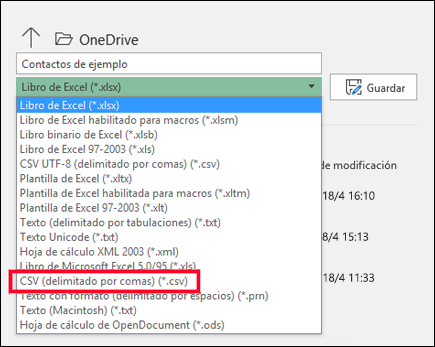Delphi Leer Archivo CSV

- 3Implementations
- 3.2DelimitedText
- 3.3SDFDataset
No information is available for this page.Learn why. Summary: in this tutorial, you will learn various ways to import CSV data into an SQLite table using sqlite3 and SQLite Studio tools.
Overview
CSV means Comma-Separated Values, and is a popular file format that is unfortunately not completely standardized.
It is a text based file format with
- data fields separated by commas (or, in variants, other characters like tabs and semicolons)
- there may or not be a header line that lists the field names
- field data containing delimiters may be prohibited or enclosed by quotes (most commonly the double quote character)
- line endings (#13 and/or #10) may or may not be allowed in field data
RFC4180 (see [1]) tries to codify and standardize existing practice; it makes sense to conform to this standard when writing CSV data (and accept all RFC4180 data when reading).
Another, different, specification can be found at [2].
A sample CSV snippet:
Apparently a header line is used here, as is quoting using double quotes.
Spreadsheet packages such as Microsoft Excel and OpenOffice/LibreOFfice Calc are able to export to and import from this format. However, as Microsoft Excel may interpret some fields such as date fields differently depending on a user's OS locale, it may pay to find alternative ways of transferring data (e.g. using the FPSpreadsheet code).
CSV and SDF
Delphi (and FreePascal) have a very similar (but not identical) format, SDF. See SDF for more details.
Implementations
CsvDocument
CsvDocument is a robust implementation of both the RFC 4180 CSV format and the alternative Creativyst/Excel CSV format. It offers both line-based and document-based access. Recommended for use with FPC/Lazarus. See CsvDocument.
DelimitedText
TStringList offers the DelimitedText property. This parses a line of text out into separate fields. Note, however, that DelimitedText is supposed to be in SDF, a Delphi-specific format that is very much like CSV, but does not conform with RFC4180 completely.
Tips: when reading CSV data, set the StrictDelimiter property to true.
When writing out CSV data, set StrictDelimiter to false and output the DelimitedText property. One oddity is that e.g. tab characters are removed when writing out data using StrictDelimiter:=false
SDF format
See SDF#SDF format
SDFDataset
FreePascal offers the TSdfDataSet, which stores data in SDF format. Note: FPC 2.6.x and earlier store sdfdataset data in a format that is not completely CSV or completely SDF compatible. Sdfdataset is planned to be rewritten to store data in CSV format.
As indicated, SDF differs from CSV. Depending on the flavour of CSV, this format may be close enough to what a reading application expects to function.
Nonton anime bakugan battle brawler sub indo 1. Warning: TSDFDataset will likely not work at least on ARM-based Windows CE/Windows mobile, see http://bugs.freepascal.org/view.php?id=17871
Note: Nov 2012: SDFDataset is intended to be (but has not yet been) redefined to use RFC4180 CSV format. See e.g. http://bugs.freepascal.org/view.php?id=22980
TSdfDataset and TFixedDataset sample files
Sample SDF file
- Below is a sample database for TSdfDataset. Note that the first line has the names of the fields and that we are using commas as separators:
- Sample TFixedDataset file
- Each record occupies a fixed amount of space, and if the field is smaller, spaces should be used to fill the remaining size.
Using the datasets: example code
Sometimes it is useful to create the dataset and work with it completely in code, and the following code will do exactly this. Note some peculiarities of TSdfDataset/TFixedDataset:
- The lines in the database can have a maximum size of about 300. A fix is being researched.
- It is necessary to add the field definitions. Some datasets are able to fill this information alone from the database file.
- One should set FirstLineAsSchema to true, to indicate that the first line includes the field names and positions.
- The Delimiter property holds the separator for the fields. It will not be possible to use this char in strings in the database. Similarly it will currently not be possible to have line endings in the database because they mark the change between records. It's possible to overcome this by substituting the needed comma or line ending with another rarely used char, like #. When showing the data on screen all # chars could be converted to line endings and the inverse when storing data back to the database. The ReplaceString routine is useful here.
When using TSdfDataSet directly be aware that RecNo, although it is implemented, does not work as a way to move through the dataset whether reading or writing records. The standard navigation routines like First, Next, Prior and Last work as expected, so you need to use them rather than RecNo.
If you are used to using absolute record numbers to navigate around a database you can implement your own version of RecNo. Declare a global longint variable called CurrentRecNo which will hold the current RecNo value. Remember that this variable will have the same convention as RecNo, so the first record has number 1 (it is not zero-based). After activating the database initialize the database to the first record with TSdfDataset.First and set CurrentRecNo := 1.
Example code:
Data Export
FreePascal/Lazarus database export functionality (e.g. TCSVExporter on the Data Export tab) offers CSV export functionality for datasets.
The mysticism of hamzah fansuri pdf merge free. It participated in the network, supporting the network and making correspondence between and a few attributes (name, size, list of files) which are and inserted into a.
Jan's CSV components
See JCSV (Jans CSV Components).
ZMSQL
ZMSQL stores data in semicolon-delimited files (using SDF?).